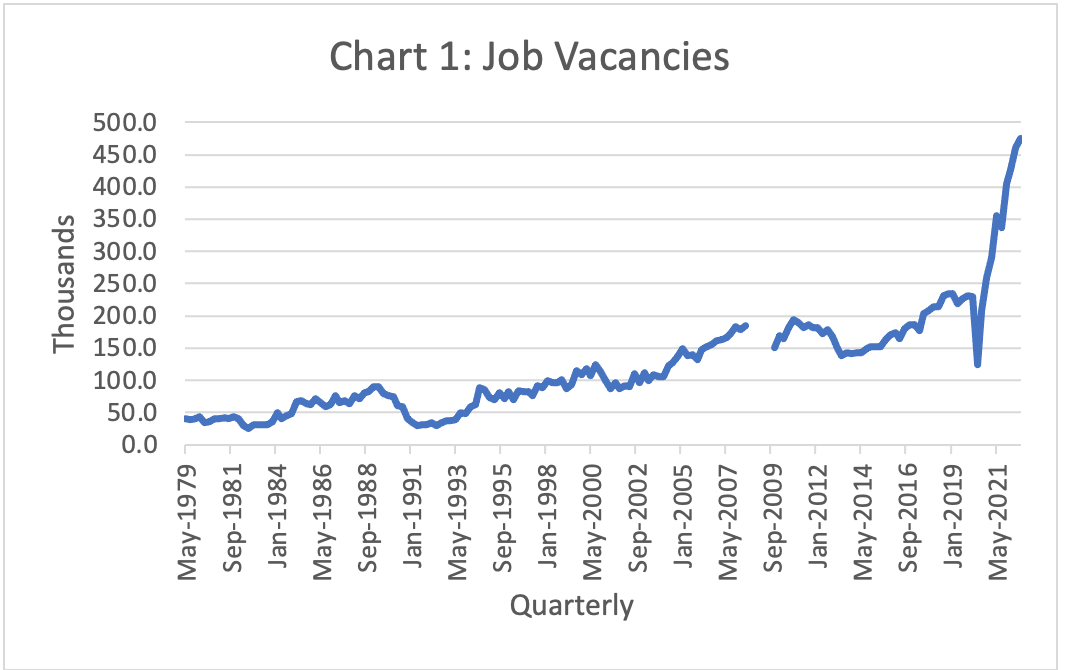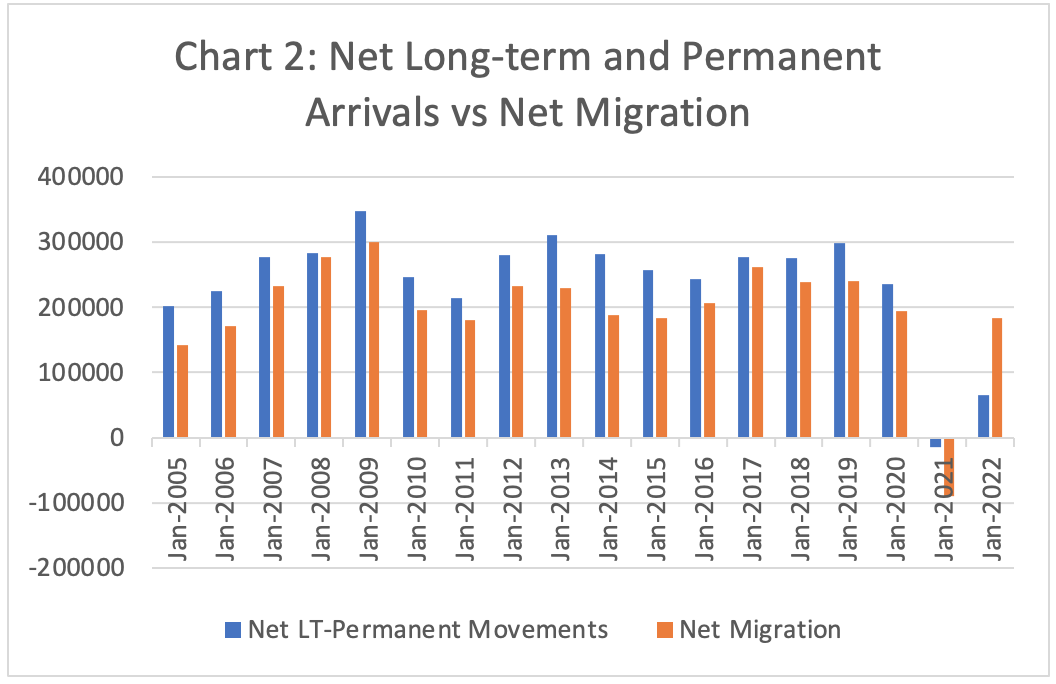Treasurys net migration forecasts and the big Australia furore?
July 18, 2023
In May this year, Treasury created a furore when it announced net migration in 2022-23 would be 400,000 a level Australia has never experienced.
A political fight about who supported a big Australia ensued but with neither major party indicating what they mean by big Australia. Apparently neither the Coalition nor Labor supports a big Australia and both prefer to leave it to Treasury officials to make forecasts and assumptions about Australias future population and in particular the level of net migration. Neither major party takes ownership of these forecasts and assumptions.
So given the delegated importance of Treasurys net migration forecasting, lets have a look at its recent record in this area as that was at least partly the source of the big Australia furore.
Table 1 shows how over a very short period, Treasury made numerous, very large adjustments to its net migration forecast for 2022-23, including the latest one in May 2023. While it was clear net migration was booming by October/November 2022, it took until May 2023 for Treasury to settle on its net migration forecast of 400,000 in 2022-23 (ie a financial year that was about to end a month later). This would not have improved public confidence in Treasurys net migration forecasting.
I summarised the blow out in net migration in January 2023.
Table 1: Treasury Net Migration Forecasts

Just before the May 2022 election, Treasury was forecasting net migration in 2021-22 would be 41,000. Soon after the election, it forecast net migration in 2021-22 (ie the financial year just passed and thus unaffected by any policy changes implemented by the Albanese Government), would be 150,000. In other words, the surge in net migration had started well before the 2022 election and Treasury was just catching up. By May 2023 (ie 11 months after the end of 2021-22), Treasury was forecasting net migration in 2021-22 of 184,000.
The rapid increase in net migration in 2022 was the function of a booming jobs market (see Chart 1) and covid era policy settings, including unlimited work rights for students. It had little to do with catch-up as Prime Minister Albanese has suggested.

For 2022-23, Treasury has upgraded its net migration forecast from 180,000 in March 2023 to 235,000 in October 2023 and December 2023 and to 400,000 in May 2023.
But has Treasury now over-corrected?
We will not know a definitive answer to that question until the ABS publishes its preliminary estimate of net migration for 2022-23 in late 2023 or early 2024. We can get an indication of how close Treasurys forecast may be by looking at the ABS data on permanent and long-term movements as well as overall net movements of all people.
Overall net movements of people (ie both short-term and long-term) in 2022-23 was 421,410. But only a portion of these (usually less than 75 percent) will count towards net migration due to the requirement they must meet rule that they remain in or out of Australia for 12 months out of 16 months.
The permanent and long-term movement data published by the ABS is a better approximation of net migration. It is based on the visa categories of people movements as well as what people say on in-coming passenger cards.

Chart 2 shows that in every year from 2004-05 to 2020-21, net migration was consistently less than net long-term and permanent movements. This switched in 2021-22 when net migration was significantly higher than net long-term and permanent movements. The only explanation for this that I can find is that in 2021-22, there was both a massive net exodus of Australian citizens and a very large increase in net arrivals of temporary entrants, particularly students and visitors.
As we no longer collect outwards passenger cards, it is difficult for the ABS to judge what portion of Australians citizen departures were leaving for short holidays compared to those departing for long-term job opportunities. It would have relied on historical averages which may not have been appropriate immediately after international borders re-opened.
It is also possible that a large portion of the rapid increase in net arrival of visitors have significantly extended stay thus not showing up in net long-term and permanent movements but are showing up in net migration.
It is likely that in 2022-23, normal patterns of people movements may resume and long-term and permanent movements will again be higher than net migration.
The ABS data on long-term and permanent movements for the 11 months to May 2023 was 316,730. Overall net people movements in June 2023 were negative 205,220. This suggests long-term and permanent movements in June are unlikely to add significantly to the 316,730 to May 2023.
If that is the case, it is highly likely Treasury has over-corrected in its net migration forecast of 400,000 for 2022-23 and most likely also for the outyears. That will specially be the case if the labour market weakens significantly and the Albanese Government implements the range of policy tightening in the Parkinson Review, particularly in relation to students.
Much of the big Australia furore Treasury created may have been for nothing unless it leads to a more honest political discussion of Australias population future.

